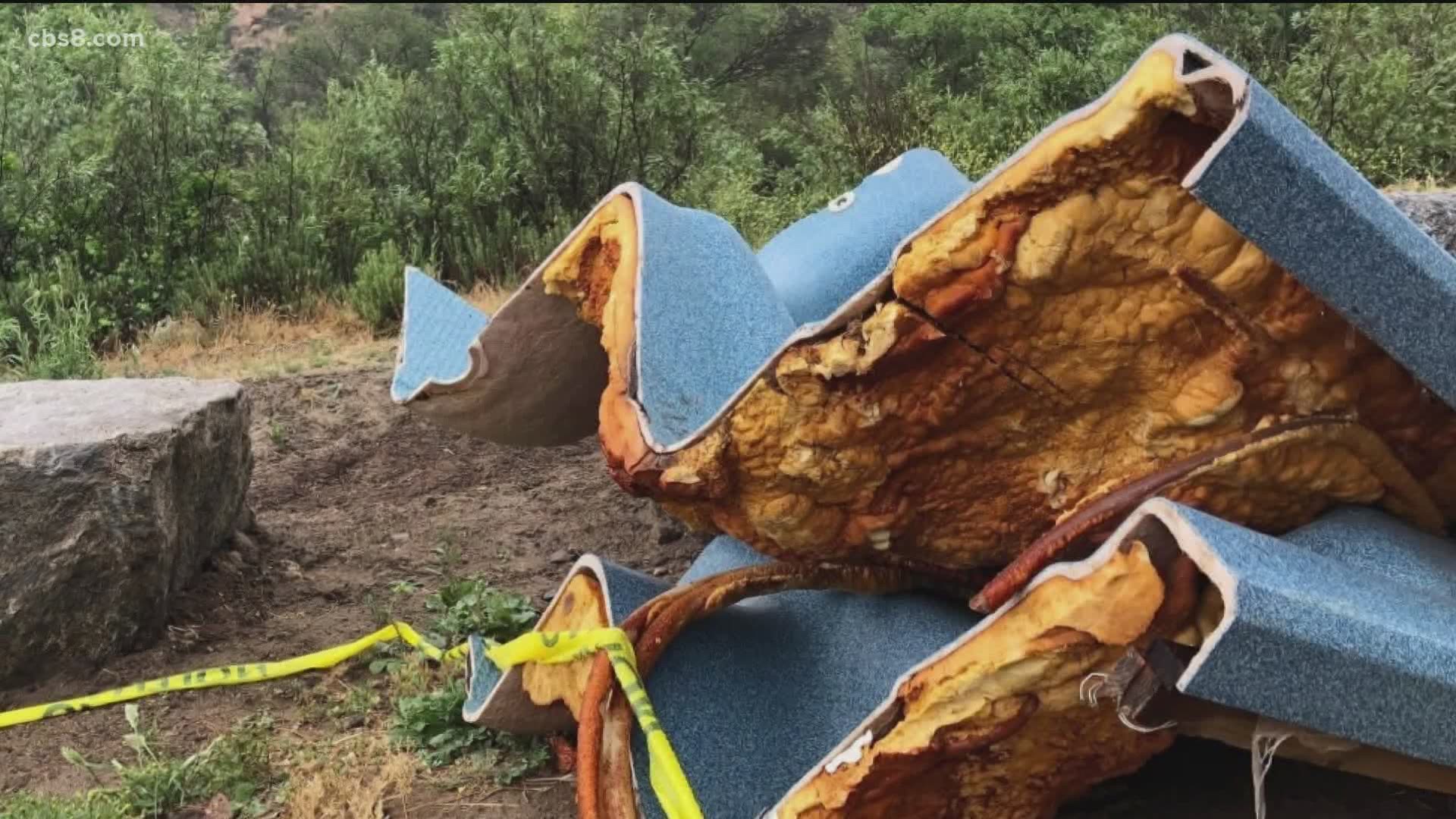SAN DIEGO COUNTY, Calif. — San Diego County is home to numerous hiking trails from the coast to the desert. Being an avid hiker myself, I see a lot of foot traffic, and often times, trash!
"Hiking is a way to get into nature. I think that's why people leave, and go to hike and do these things. So, when you go into nature, it really should be kept that way," said Lauren Short, Community Program Manager for I Love a Clean San Diego.
Lauren and I sat down to talk about our love of hiking and desire to keep the trails clean in an effort to not throw off the balance of nature. As San Diegans, we need to remember what we leave behind on the trails greatly disrupts the harmony of the biodiversity in our County, in ways we might not even think of.
"80% of the litter that we find in this common drainage point, which is the ocean, is going to end up being, starting inland. So, that's something that on a trail you may not associate the ocean with, but that trash that you see will end up in that ocean eventually," said Short.
So, even though you might not be hitting a trail near the coast, your litter will still find its way into our watershed, which is a large area of land that connects to a common drainage point, whether the trash is swept up in a flowing river or during a rainy day in San Diego.
Lauren also detailed the most common trash culprits.
"A lot of plastic items, so plastic food wrappers. Someone's packing in a granola bar, something like that. Plastic water bottles, where the caps are seen with those linked together. I do see tissues or paper tissues sometimes, I think those are pretty common," she said.
Another common trash item found on predominately pet-friendly trails are doggy waste bags. Naturally, they do not breakdown because they are plastic. But, Lauren also detailed other items that are found on trails that are deemed biodegradable, but should still not be left behind on our local trails.
"If you have an apple core, banana peel, or something a little bit more organic, you still don't want to toss those. You wanna pack those out. They are biodegradable, but they don't necessarily fit in the environment that they are left in when you're hiking on the trail," said Short.
The trash left behind is not just ugly, but it can lead to unfavorable disruptions for the wildlife that inhabit these trails.
Short continued, "we're sort of influencing them indirectly, we maybe think a few things on the road won't bother them, but this will be a very new thing to these animals. So, you know again, going back to that banana peel or that apple core, when you toss those, these seem in our mind like they will biodegrade, it won't be a problem. But they will disrupt that wildlife kind of progress of eating and looking for their own natural foods."
But, trash isn't the only problem for the wildlife. Another major disrupter to the balance of nature comes when people veer away from the designated path.
"There might be some sort of native plant that you're not looking at or thinking about, that you could be interrupting their natural process. There could be a little baby in there growing. Same thing with the animals or wildlife that you see," said Short.
Moral of the story, stay on the trail for the sake of our wildlife here in San Diego.
When planning your next hike, Lauren suggests packing in what you pack out. Keep your supplies at a minimum. You should also consider using reusable water bottles to cut down on single use plastics. If you do have trash, please tuck it away in your bag or pockets until you can properly dispose of it.
And if you are ever out on a trail and you see trash that can be hazardous, Lauren recommends checking the trailhead for resource information. If you are hiking within the City of San Diego, she also recommends checking out the Get It Done app.
WATCH: Earth 8: Leading a 'zero waste' life

